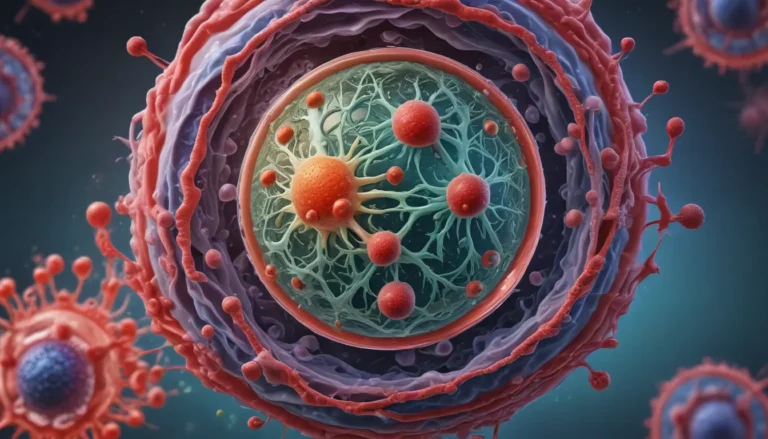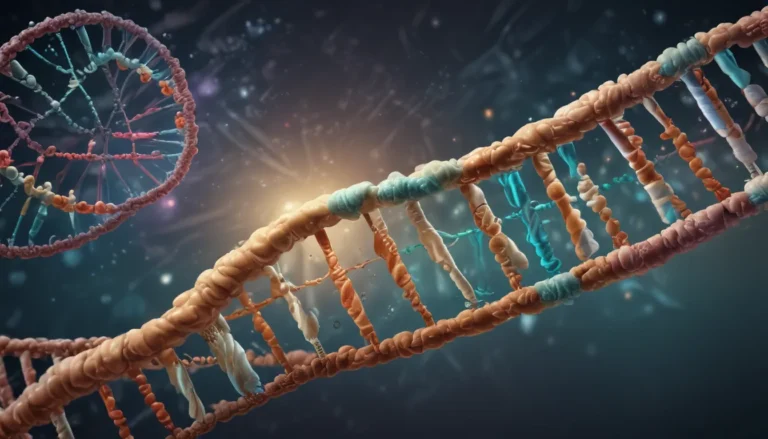A Note About Images: The images used in our articles are for illustration purposes only and may not exactly match the content. They are meant to engage readers, but the text should be relied upon for accurate information.
Genetics and molecular biology offer a captivating journey into the realm of recombination frequency, a fundamental concept that shapes genetic diversity and evolutionary patterns. This article delves into the intricate world of recombination frequency, unraveling 19 mind-blowing facts that shed light on its significance in understanding genetic inheritance, disease risk prediction, and species evolution.
Understanding Recombination Frequency
Recombination frequency, also known as genetic recombination, serves as a measure of genetic linkage, reflecting the likelihood of two genes being inherited together due to their physical proximity on a chromosome. This process plays a pivotal role in creating new genetic combinations, fostering genetic diversity, and shaping the evolutionary trajectory of species.
The Influence of Distance Between Genes
The recombination frequency between genes is influenced by the distance separating them on a chromosome. Closer genes exhibit lower recombination frequencies, while genes located further apart showcase higher recombination rates. This dynamic relationship plays a crucial role in genetic inheritance patterns and diversity within populations.
Catalyst for Genetic Variation: Crossing Over
Higher recombination frequencies pave the way for increased occurrences of crossing over during meiosis, where DNA segments are exchanged between chromosomes. This process of genetic shuffling enhances genetic diversity, leading to the emergence of novel traits and adaptations essential for evolutionary success.
Environmental Factors and Recombination Frequency
Environmental variables, such as temperature, radiation, and chemical exposure, can impact the rate of recombination. These factors have the potential to influence genetic diversity within populations by modulating recombination frequency, highlighting the intricate interplay between genetic mechanisms and external influences.
Genetic Mapping and Recombination Frequency
Recombination frequency serves as a cornerstone for genetic mapping, enabling scientists to delineate the relative positions of genes on chromosomes. By utilizing recombination data from genetic crosses, researchers construct genetic maps that provide invaluable insights into the inheritance patterns of genes and their implications for disease susceptibility.
Unraveling the Mysteries of Recombination Frequency
Recombination frequency is quantified in centimorgans (cM), a unit named in honor of geneticist Thomas Hunt Morgan. One centimorgan denotes a 1% recombination frequency between genes, offering a standardized metric for measuring genetic linkage and predicting inheritance patterns.
Predicting Disease Risk Through Recombination Frequency
By examining the recombination frequency between disease-associated genes, scientists can gauge the likelihood of individuals inheriting genetic disorders. This predictive capacity plays a pivotal role in genetic counseling, disease management, and unlocking the mysteries of hereditary conditions.
From Fruit Flies to Humans: Evolution of Recombination Studies
The exploration of recombination frequency traces its origins to pioneering studies in fruit flies conducted by Thomas Hunt Morgan and his team. These early investigations laid the foundation for our understanding of genetic inheritance and paved the way for revolutionary breakthroughs in genetics.
Gender Disparities in Recombination Frequency
Sex-specific differences can influence recombination rates, with females in certain species exhibiting higher frequencies than males. This gender variation in recombination frequency contributes to diverse inheritance patterns and adds a layer of complexity to genetic analyses.
Implications of Recombination Frequency in Genetics
Recombination frequency is not uniform across chromosomes, with certain regions known as recombination hotspots displaying heightened rates of genetic exchange. These variations in recombination frequency play a key role in shaping evolutionary trajectories and genetic diversity within populations.
Leveraging Genetic Markers and Chromatin Structure
Genetic markers, such as single nucleotide polymorphisms (SNPs), offer valuable tools for tracking gene inheritance and determining recombination frequencies. Additionally, the chromatin structure of DNA influences the accessibility of genes for recombination, highlighting the intricate interplay between genetic and epigenetic mechanisms.
Validating Gene Maps Through Recombination Frequency
By comparing predicted recombination frequencies with observed data, scientists can refine genetic maps and enhance our understanding of gene positions on chromosomes. This validation process ensures the accuracy and reliability of genetic mapping efforts, offering a comprehensive blueprint of the genetic landscape.
Evolutionary Significance of Recombination Frequency
Recombination frequency contributes to genetic diversity within populations, fueling evolutionary processes through the introduction of genetic variations. These adaptations, driven by recombination events, serve as the building blocks for natural selection and the survival of species in changing environments.
Unlocking Genetic Mysteries Through Recombination Frequency
The concept of recombination frequency emerged from the foundational principles of Gregor Mendel’s laws of inheritance, expanding our understanding of genetic mechanisms and inheritance patterns. By exploring recombination frequency, scientists gain critical insights into disease susceptibility, genetic diversity, and evolutionary dynamics.
Impact on Genetic Linkage Analysis
Genetic linkage analysis relies on accurate assessments of recombination rates to pinpoint the locations of disease-associated genes. Understanding recombination frequencies enhances the precision of genetic mapping efforts, facilitating the identification of critical genetic markers and inheritance patterns.
Recombination Frequency in Sexual Reproduction
The essence of recombination frequency lies in its role in sexual reproduction, where it drives genetic variation and evolutionary adaptation. By shuffling genetic material, recombination frequency ensures the creation of unique gene combinations in each individual, contributing to the diversity and resilience of populations.
Conclusion: Embracing the Wonders of Recombination Frequency
Recombination frequency stands as a captivating frontier in genetics, offering insights into the intricate processes that govern inheritance, evolution, and genetic diversity. The 19 mind-blowing facts unveiled in this exploration underscore the profound impact of recombination frequency on genetic studies, disease research, and species conservation. By unraveling the complexities of recombination frequency, scientists pave the way for innovative advancements in personalized medicine, agriculture, and evolutionary biology.
FAQs: Unraveling Common Questions About Recombination Frequency
Q: What is recombination frequency?
A: Recombination frequency reflects the likelihood of genetic recombination occurring between two genes on a chromosome during meiosis.
Q: How is recombination frequency calculated?
A: Recombination frequency is calculated by analyzing the number of recombinant offspring from a genetic cross and dividing it by the total offspring count.
Q: Why is recombination frequency important?
A: Recombination frequency plays a critical role in genetic mapping, inheritance pattern analysis, and disease risk prediction, offering valuable insights into genetic mechanisms.
Q: Can recombination frequency be altered?
A: Environmental factors and genetic markers can influence recombination frequency, yet the physical distance between genes remains a primary determinant of recombination rates.
Q: Are there practical applications of recombination frequency?
A: Yes, recombination frequency has diverse applications in medicine, agriculture, and conservation biology, aiding in disease diagnosis, trait breeding, and species preservation efforts.
Dive Deeper Into the World of Genetics
Recombining the intricate threads of genetic inheritance, recombination frequency stands as a cornerstone of genetic exploration. Delve into the fascinating nuances of population genetics and molecular biology to unravel the mysteries of life’s genetic tapestry. Explore the captivating realm of genetic variation to witness the awe-inspiring diversity within species and the evolutionary forces shaping our world.
Your Feedback Matters
At the heart of our commitment to delivering engaging and credible content lies your valuable feedback. Each fact shared on our platform is a collaborative effort, driven by real users like you, to enrich our collective understanding of genetics. Trust in our dedication to accuracy, authenticity, and quality as we embark on a journey of discovery and learning together.





